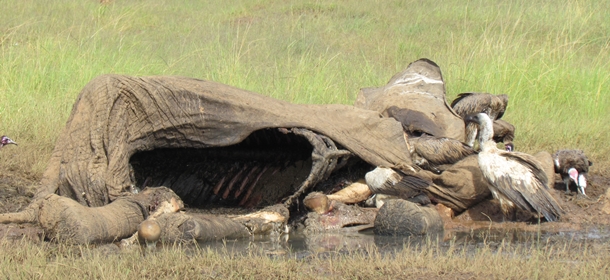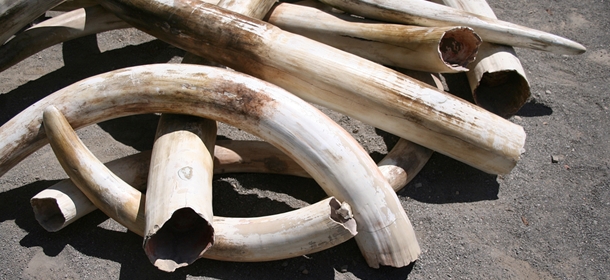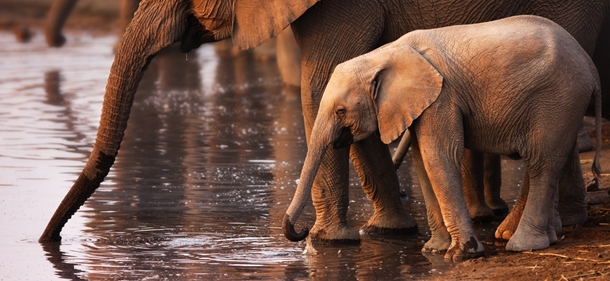“Our window of opportunity to tackle the growing illegal ivory trade is closing. If we do not stem the tide, future generations will condemn our unwillingness to act.”
If we want to save the elephant (and that’s where we are, we’re not helping or protecting, we’re trying to save) we need to know how many there are left. We need to study where the main populations are and whether they can reach each other or are isolated. We need to know whether they live within the safer environment of a National Park or reserve, or live in places where they are more vulnerable to poaching and encroachment on their environment. Current population estimates are between 400,000 and 650,000, but are based generally on guestimates. 35,000 were killed in 2012. 75% of all forest elephants have been killed in the last 10 years. This is our last chance.
Of course, after many years of conservation and study, we do have a fairly good grasp of some of these issues, especially in those countries where animals conservation has been a key issue. Its estimated ( or at least hoped in a couple of cases) that elephants now live in 35 African countries. Originally they were recorded in 46. One problem is that in 20 of the 35, total elephant populations are down to less than 1,000 individuals, in some countries spread out over vast areas. Some for the countries just don’t have a viable population to survive. Its doubtful whether elephants can survive in Western Africa and the population of Congo has been all but wiped out during the civil war.
 Its equally depressing if you look at the areas they live in. They now exist in approximately 15% of the area they used to cover. Population growth has led to the exploitation of land they used to feed on, either to create farms or to graze with domestic animals. Buildings, fences and roads have been put across traditional migration routes, in some places making them impassable. Forests have been cleared for their timber. Elephants are seen as a nuisance, pushing down trees, trampling fields and eating crops, yet they, like the indigenous human populations, they are simply trying to survive.
Its equally depressing if you look at the areas they live in. They now exist in approximately 15% of the area they used to cover. Population growth has led to the exploitation of land they used to feed on, either to create farms or to graze with domestic animals. Buildings, fences and roads have been put across traditional migration routes, in some places making them impassable. Forests have been cleared for their timber. Elephants are seen as a nuisance, pushing down trees, trampling fields and eating crops, yet they, like the indigenous human populations, they are simply trying to survive.
A vital step in trying to help the elephant is to do a comprehensive survey of the elephant population. This will allow protection resources to be concentrated on areas with viable populations, and conservation to help areas where the elephant is on the brink. And help has come from Paul Allen, one of the Microsoft founders. He’s agreed to fund just such a survey to be undertaken during the dry season of 2014. Three small planes and 2 helicopters will fly a grid pattern over thirteen of the remaining countries with elephant populations, allowing a real insight into how the populations are fairing.
Indeed the Americans are currently leading the way in the fight to help the elephant. The Clinton Foundation is funding a partnership to Save the elephant, targeting “stop the killing, stop the trafficking, stop the demand.” On 14th November President Clinton announced that the stockpile of illegal ivory confiscated in the United States was to be destroyed. On live TV, broadcast to the nation, it will all be crushed. Its hoped that such a public display against the ivory trade will spur other nations into taking action.
 A conference on Ivory poaching has just finished in Botswana. It was agreed to bring in harsh new measures against the trade, including making poaching and ivory trafficking a more serious crime that qualified for Interational Crime prevention agency assistance. Among the African countries who signed, there was also China, Vietnam, Malaysia, the Philippines and Thailand. This is where the demand comes from and this is where thr problem must be tackled. Its a start but nothing more. Last week an ivory haul was seized in Xiamen in China. 6 tonnes. 3,188 tusks. The African elephant cannot take much more.
A conference on Ivory poaching has just finished in Botswana. It was agreed to bring in harsh new measures against the trade, including making poaching and ivory trafficking a more serious crime that qualified for Interational Crime prevention agency assistance. Among the African countries who signed, there was also China, Vietnam, Malaysia, the Philippines and Thailand. This is where the demand comes from and this is where thr problem must be tackled. Its a start but nothing more. Last week an ivory haul was seized in Xiamen in China. 6 tonnes. 3,188 tusks. The African elephant cannot take much more.
As Botswana President Ian Khama stated, “Our window of opportunity to tackle the growing illegal ivory trade is closing. If we do not stem the tide, future generations will condemn our unwillingness to act. Now is the time for Africa and Asia to join forces.” Add the US and Europe to that, and there may be a glimmer of hope.

